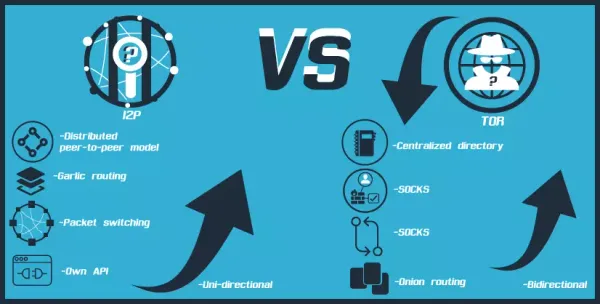Tor HSDir Election: Consensus Weight Calculation and Directory Authority Coordination
Tor HSDir election enables sophisticated consensus weight calculation, directory authority coordination, and hidden service descriptor caching for robust hidden service infrastructure.
Tor HSDir election enables sophisticated consensus weight calculation, directory authority coordination, and hidden service descriptor caching that provides robust hidden service infrastructure through intelligent directory selection, distributed consensus, and reliable descriptor management while maintaining anonymity protection and operational efficiency throughout anonymous communication and hidden service operations. Tor HSDir specification demonstrates how Tor HSDir implementation combines consensus mechanisms with caching systems to create resilient hidden service directory infrastructure that supports anonymity requirements, availability objectives, and performance goals while maintaining security properties and operational reliability throughout hidden service directory management and descriptor caching processes.
Consensus Weight Calculation and Directory Selection Mechanisms
Consensus weight calculation provides consensus weight specification showing how bandwidth measurement and capacity assessment procedures implement comprehensive directory selection through performance evaluation, capacity measurement, and reliability assessment that inform HSDir selection while maintaining network efficiency and service availability. Bandwidth assessment includes capacity measurement, performance evaluation, and reliability analysis that ensure optimal directory selection while supporting network requirements and service objectives throughout bandwidth measurement and capacity assessment operations.
Weight calculation algorithms and selection criteria address directory optimization through comprehensive calculation procedures, selection algorithms, and optimization criteria that ensure efficient HSDir distribution while maintaining load balancing and performance requirements. Weight calculation includes algorithmic processing, selection optimization, and criteria evaluation that ensure effective directory distribution while supporting network performance and operational efficiency throughout weight calculation algorithms and selection operations.
Performance metrics and reliability evaluation implement comprehensive assessment procedures through metric collection, reliability measurement, and performance analysis that inform directory selection while ensuring service quality and operational effectiveness. Performance evaluation includes metric analysis, reliability assessment, and quality measurement that ensure directory effectiveness while supporting service requirements and operational objectives throughout performance metrics and reliability evaluation activities.
Load balancing and distribution optimization strategies address network efficiency through comprehensive balancing procedures, distribution optimization, and resource allocation that maximize network utilization while maintaining service availability and performance requirements. Distribution optimization includes load balancing, resource allocation, and optimization strategies that ensure network efficiency while supporting service objectives and operational effectiveness throughout load balancing and distribution optimization operations.
Directory Authority Coordination and Network Consensus
Directory authority protocols documents directory authority protocols showing how authority coordination protocols and consensus building implement comprehensive network governance through coordination procedures, consensus mechanisms, and governance protocols that ensure network stability while maintaining decentralized operation and security properties. Authority coordination includes consensus building, governance procedures, and coordination mechanisms that ensure network governance while supporting decentralized objectives and security requirements throughout authority coordination and consensus building operations.
Network parameter adjustment and configuration management address network optimization through comprehensive parameter management, configuration coordination, and optimization procedures that maintain network performance while supporting evolving requirements and operational objectives. Parameter management includes configuration adjustment, optimization coordination, and management procedures that ensure network optimization while supporting operational requirements and performance objectives throughout network parameter adjustment and configuration management activities.
Distributed consensus mechanisms analyzes distributed consensus mechanisms showing how fault tolerance and resilience mechanisms implement comprehensive network protection through fault detection, resilience strategies, and recovery procedures that maintain network operation while protecting against failures and operational disruptions. Fault tolerance includes resilience mechanisms, recovery procedures, and protection strategies that ensure network continuity while supporting operational requirements and service availability throughout fault tolerance and resilience operations.
Security validation and integrity verification procedures address network security through comprehensive validation protocols, integrity checking, and security verification that ensure network trustworthiness while maintaining operational capability and service reliability. Security validation includes integrity verification, validation protocols, and security checking that ensure network trustworthiness while supporting operational requirements and security objectives throughout security validation and integrity verification activities.
Hidden Service Descriptor Caching and Management
Descriptor storage and retrieval mechanisms implement comprehensive caching systems through storage optimization, retrieval procedures, and management coordination that ensure descriptor availability while maintaining performance efficiency and operational reliability. Storage mechanisms include retrieval optimization, caching coordination, and management procedures that ensure descriptor availability while supporting performance requirements and operational effectiveness throughout descriptor storage and retrieval operations.
Caching strategies and expiration management address descriptor lifecycle through comprehensive caching procedures, expiration coordination, and lifecycle management that optimize descriptor availability while maintaining freshness and operational efficiency. Caching management includes expiration procedures, lifecycle coordination, and optimization strategies that ensure descriptor freshness while supporting availability requirements and operational objectives throughout caching strategies and expiration management activities.
Distribution protocols and replication procedures implement comprehensive descriptor distribution through replication strategies, distribution coordination, and availability enhancement that ensure descriptor accessibility while maintaining network efficiency and operational reliability. Distribution includes replication procedures, coordination mechanisms, and availability optimization that ensure descriptor accessibility while supporting network requirements and operational effectiveness throughout distribution protocols and replication operations.
Performance optimization and availability enhancement address service efficiency through comprehensive optimization strategies, availability improvement, and performance enhancement that maximize descriptor service while maintaining operational reliability and network efficiency. Performance enhancement includes optimization procedures, availability improvement, and efficiency enhancement that ensure optimal descriptor service while supporting operational requirements and performance objectives throughout performance optimization and availability enhancement activities.
Security Analysis and Operational Excellence Framework
Anonymous networking research analyzes hidden service security showing how attack resistance and security analysis address threat protection through comprehensive threat assessment, attack resistance evaluation, and security enhancement that protect hidden service infrastructure while maintaining operational capability and service availability. Attack resistance includes security analysis, threat assessment, and protection enhancement that ensure infrastructure security while supporting operational requirements and service objectives throughout attack resistance and security analysis operations.
Tor network monitoring provides network monitoring tools showing how operational monitoring and network health assessment implement comprehensive visibility through monitoring procedures, health evaluation, and operational assessment that ensure network effectiveness while supporting maintenance requirements and performance optimization. Operational monitoring includes health assessment, performance evaluation, and network monitoring that ensure operational effectiveness while supporting maintenance objectives and optimization requirements throughout operational monitoring and network health assessment activities.
Performance optimization and troubleshooting procedures address operational efficiency through comprehensive optimization strategies, troubleshooting protocols, and performance enhancement that maximize network capability while maintaining service quality and operational reliability. Performance troubleshooting includes optimization procedures, problem resolution, and enhancement strategies that ensure operational efficiency while supporting service requirements and performance objectives throughout performance optimization and troubleshooting operations.
Hidden service deployment provides hidden service deployment guidance showing how best practices for hidden service deployment and management provide comprehensive guidance through deployment procedures, management strategies, and operational recommendations that ensure successful hidden service implementation while maintaining security properties and operational effectiveness. Best practices include deployment guidance, management procedures, and operational recommendations that support successful implementation while maintaining security objectives and operational efficiency throughout hidden service deployment and management activities.




